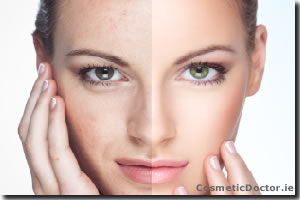Time and the sun leaves their marks on the most beautiful of skin. Chemical peels can reverse the signs of sun damage and skin ageing. Chemical peels are one of the oldest procedures which have been used for many decades to treat fine lines and wrinkles, pigmentation, acne and melasma. People tend to associate chemical peels with the infamous Sex and the City episode where Samantha had a chemical peel in time for Carrie’s book release party. However not all chemical peels are the same. There is a chemical peel to suit your skin issue and lifestyle. It is worth noting that in the hands of qualified professionals the benefits of chemical peels outweigh the risks.
Chemical peels work by stimulating the shedding of dead skin cells revealing beautiful smooth skin. The result is an improvement in surface texture and the appearance of your skin making it look more refreshed and youthful.
Which are the most popular chemical peels?
The most common peels available contain either salicylic, glycolic or trichloracetic acid. Depending on type and strength, chemical peels penetrate at different depths of the epidermis or dermis. Depending on the depth of penetration, chemical peels can be used to improve fine lines or deeper wrinkles, melasma, hyper-pigmentation, acne scars, or age spots, and can also enhance the overall texture of one’s skin.
Glycolic acid peels contain an acid derived from sugar cane which can dissolve the “glue” or bonds that hold the surface skin cells of the epidermis in place. Glycolic peels are firm favourites of Gwyneth Paltrow to give her skin a quick boost for a red caret event. Glycolic peels may be carried out during your lunch break and result in minimum downtime.
The TCA (tricholoroacetic acid) Peel is prepared and administered by medical practitioners only. Therefore you will not have a TCA peel at your local beauty salon. This medium depth chemical peel will not only improve the pigmentation, texture of your skin, but it also helps to improve skin tone and reduce the visibility of fine lines and superficial discoloration, such as age spots.
What to expect after a chemical peel
Side effects of chemical peels include peeling for a few days up to a week depending whether a superficial (glycolic) or medium depth (Trichloracetic acid) peel has been used. Mild facial redness may also occur. These side effects are short lived and can be camouflaged using makeup during the healing period.
Often several treatments may be recommended in order to achieve the maximum effects. Phone our Dublin clinic on 01 685 3100 for further details about chemical peels.


